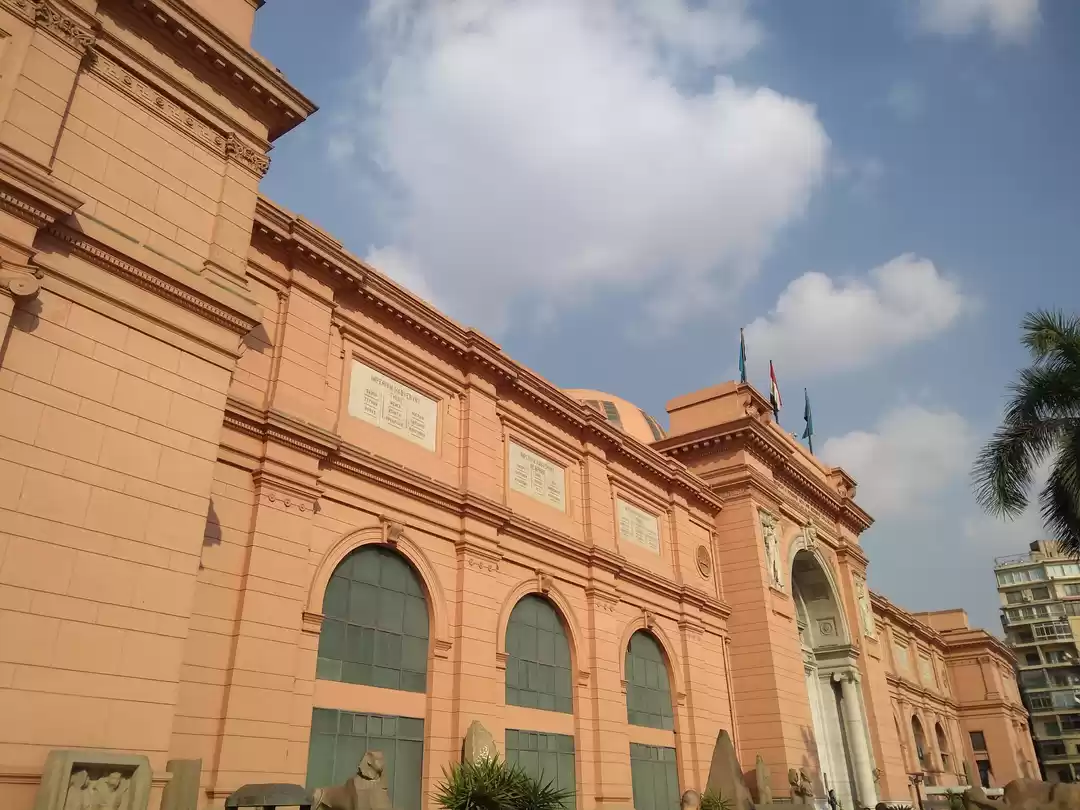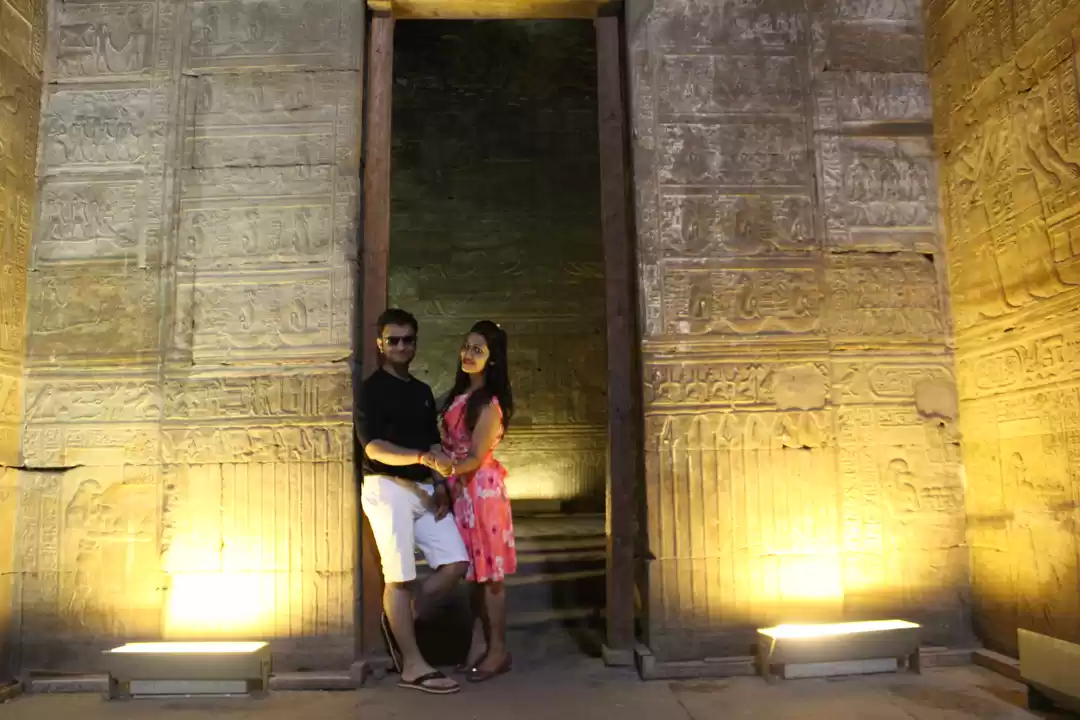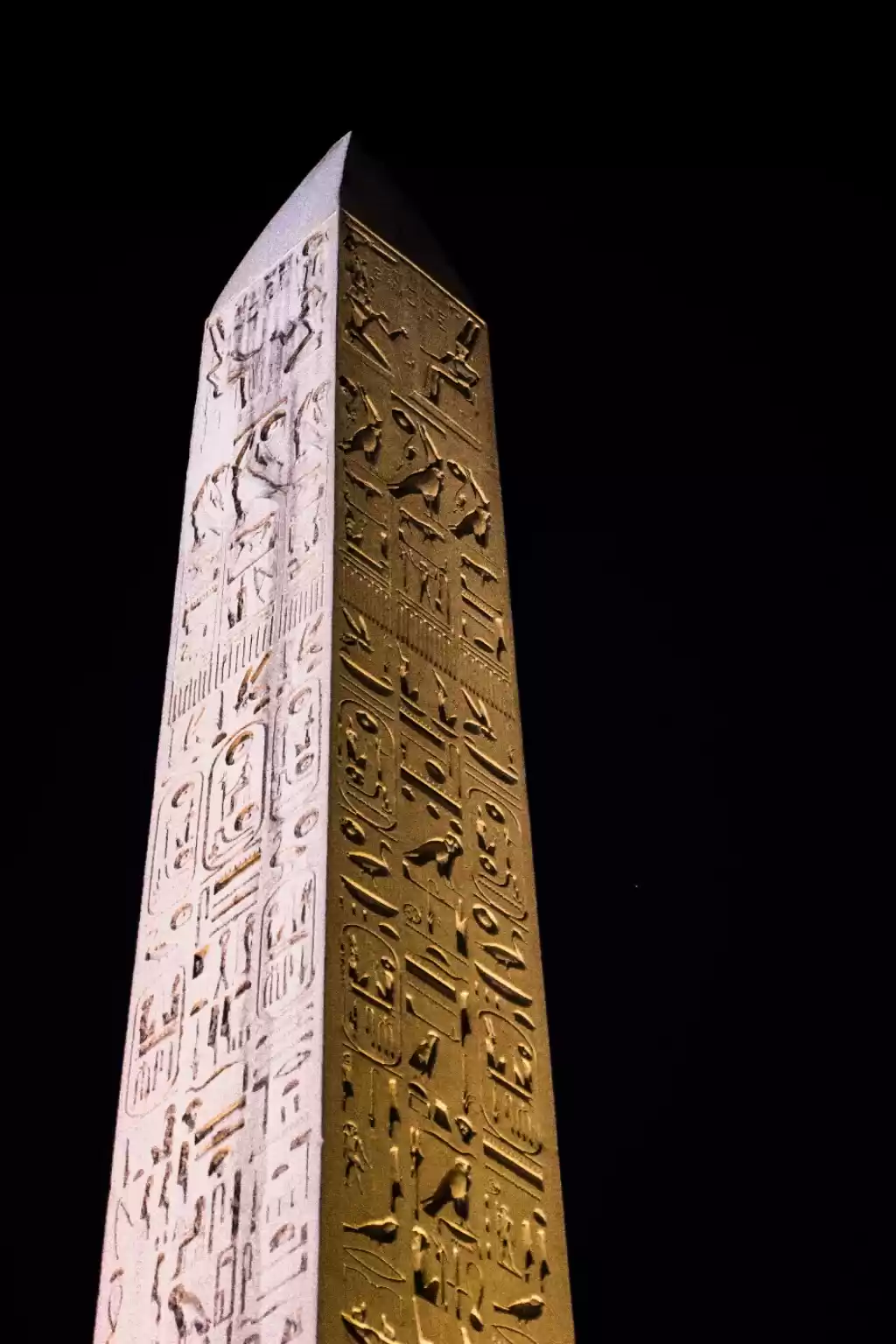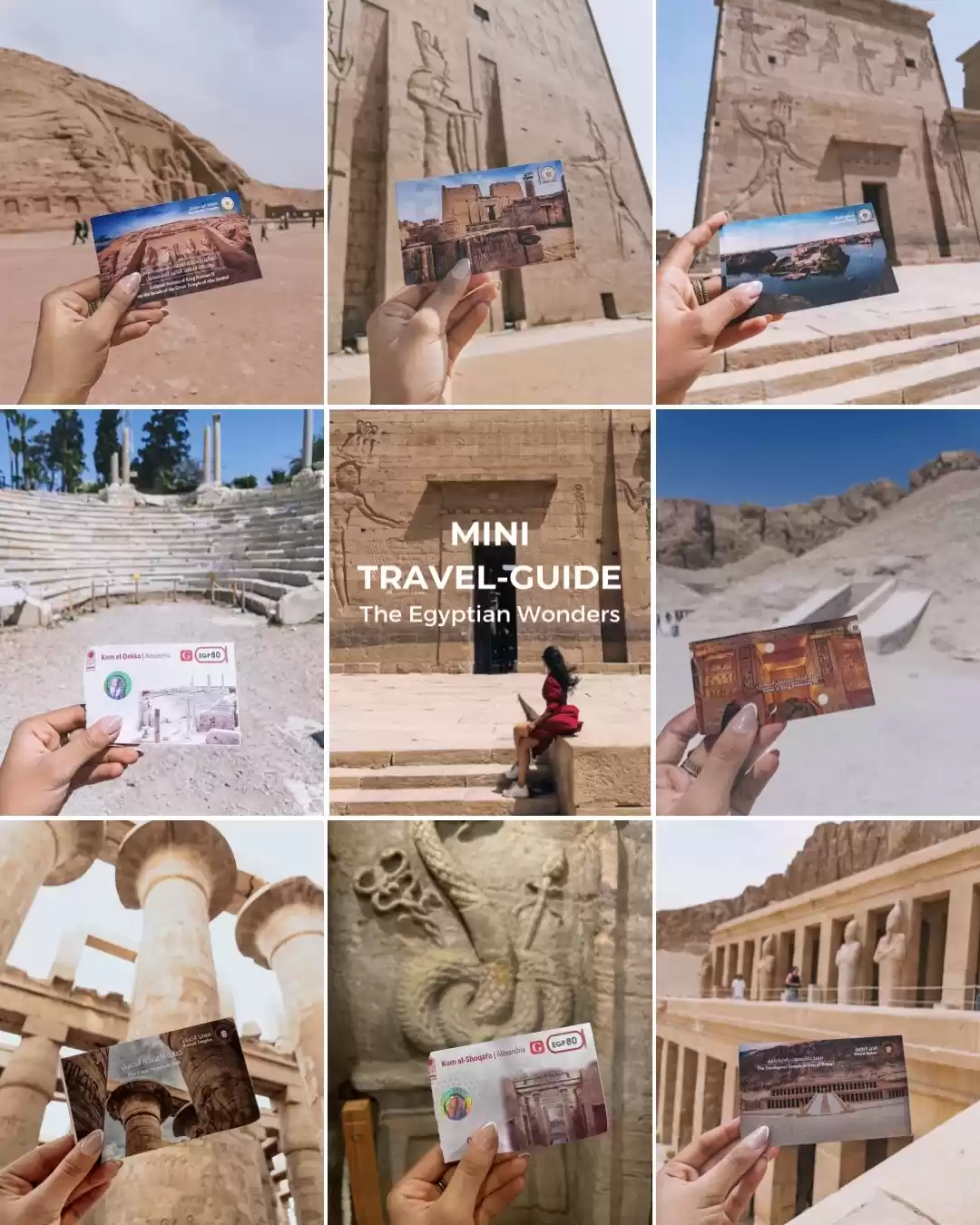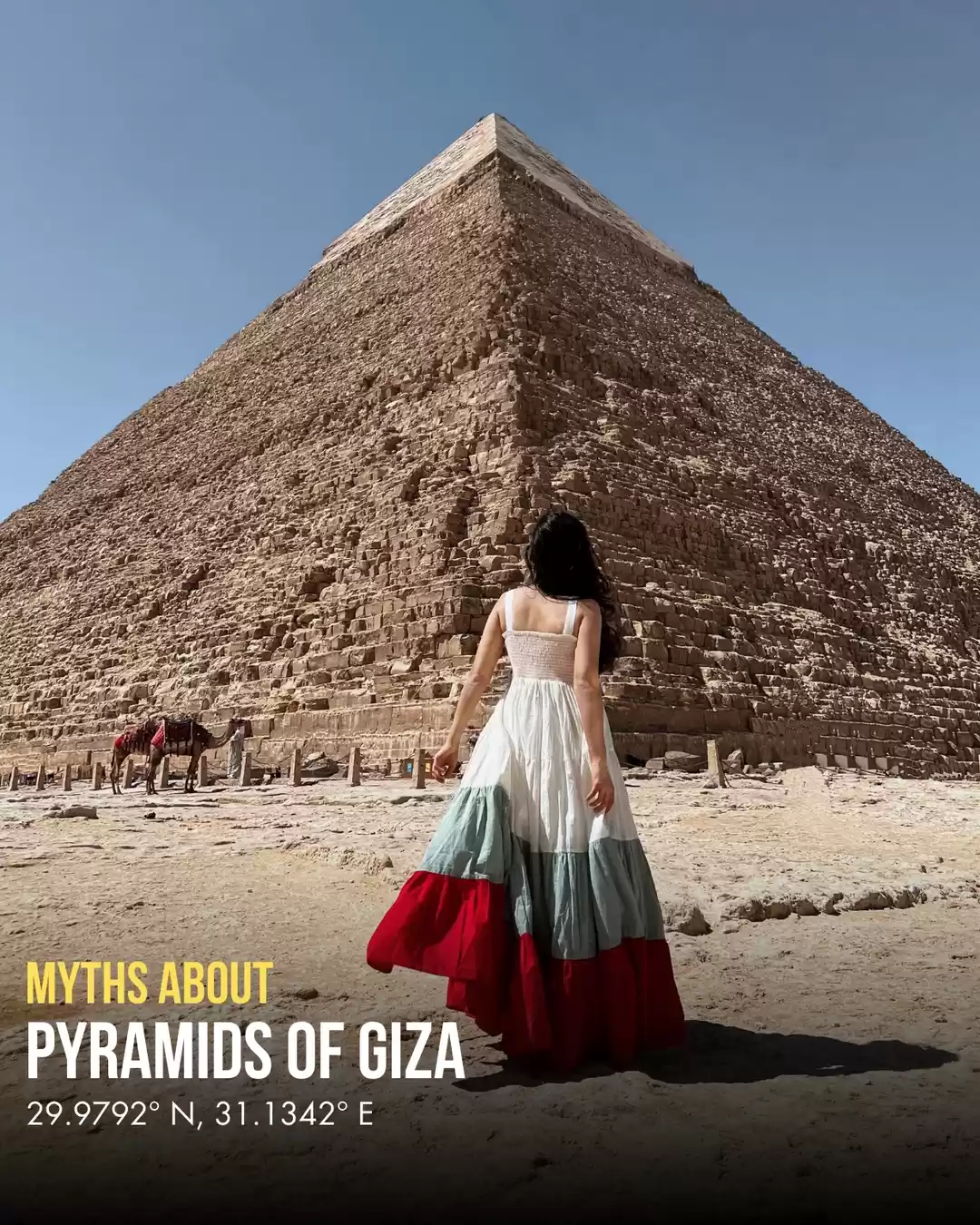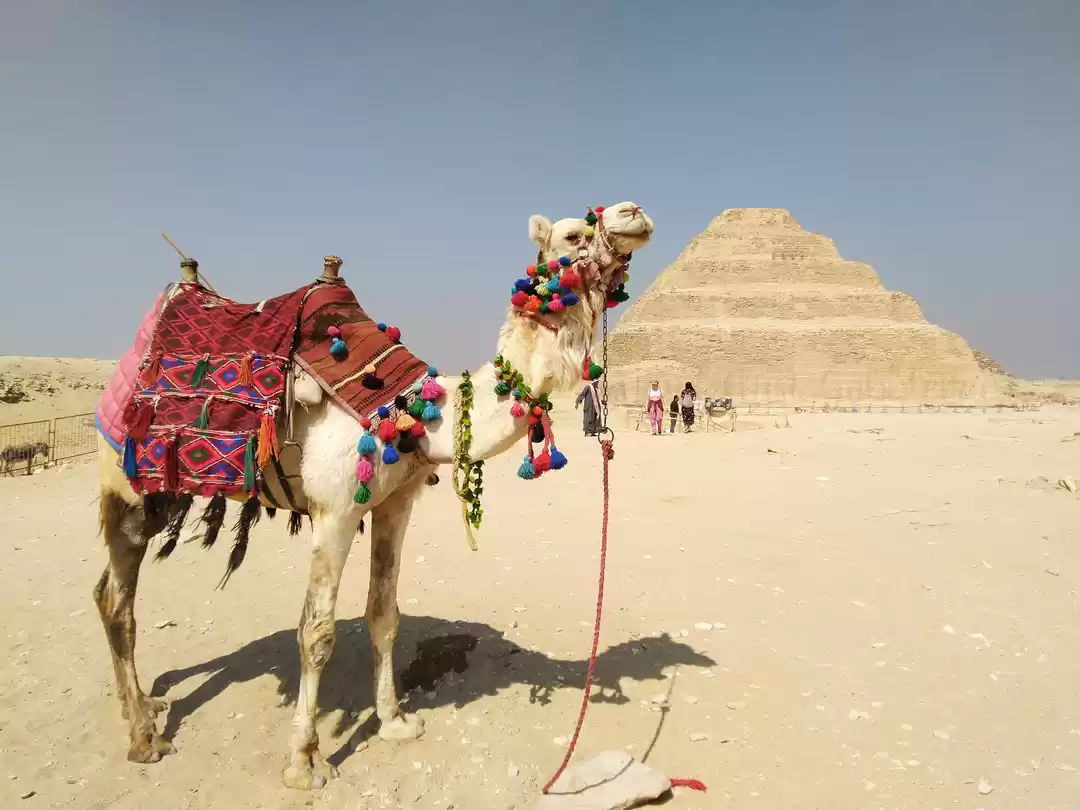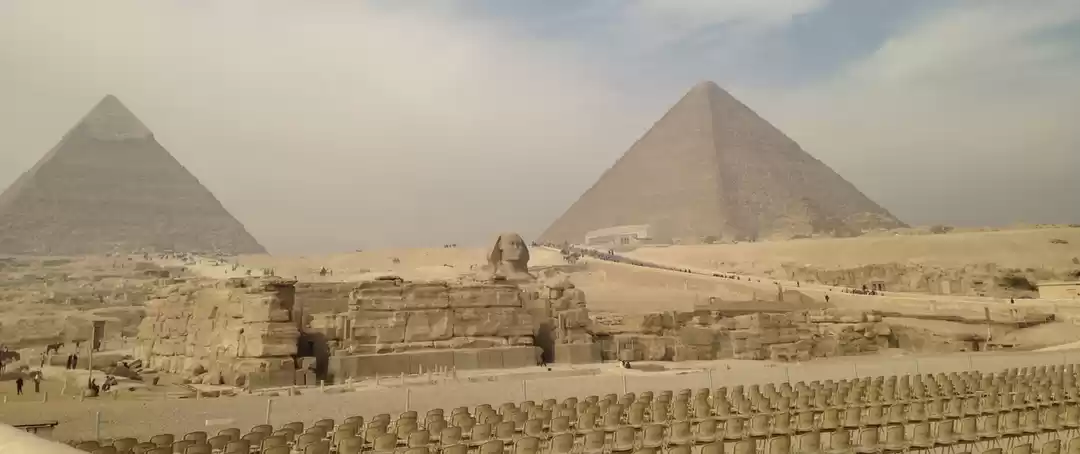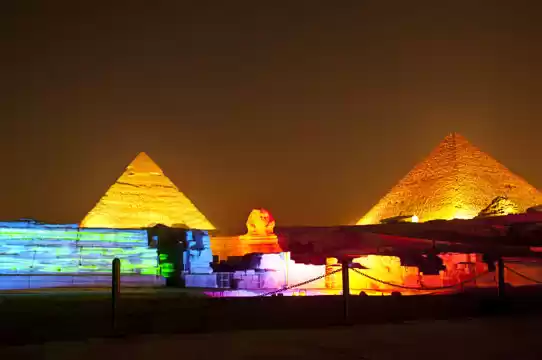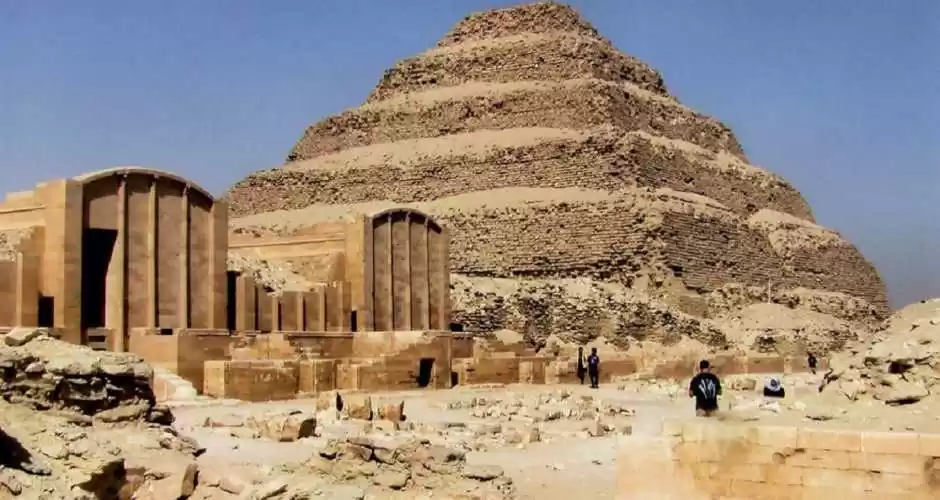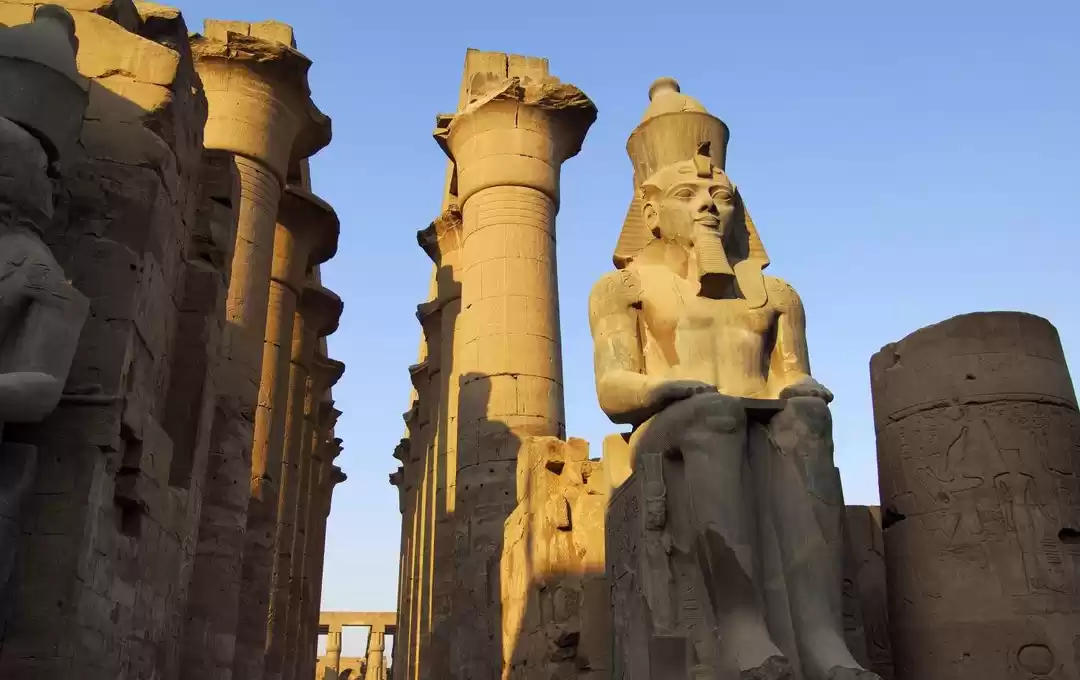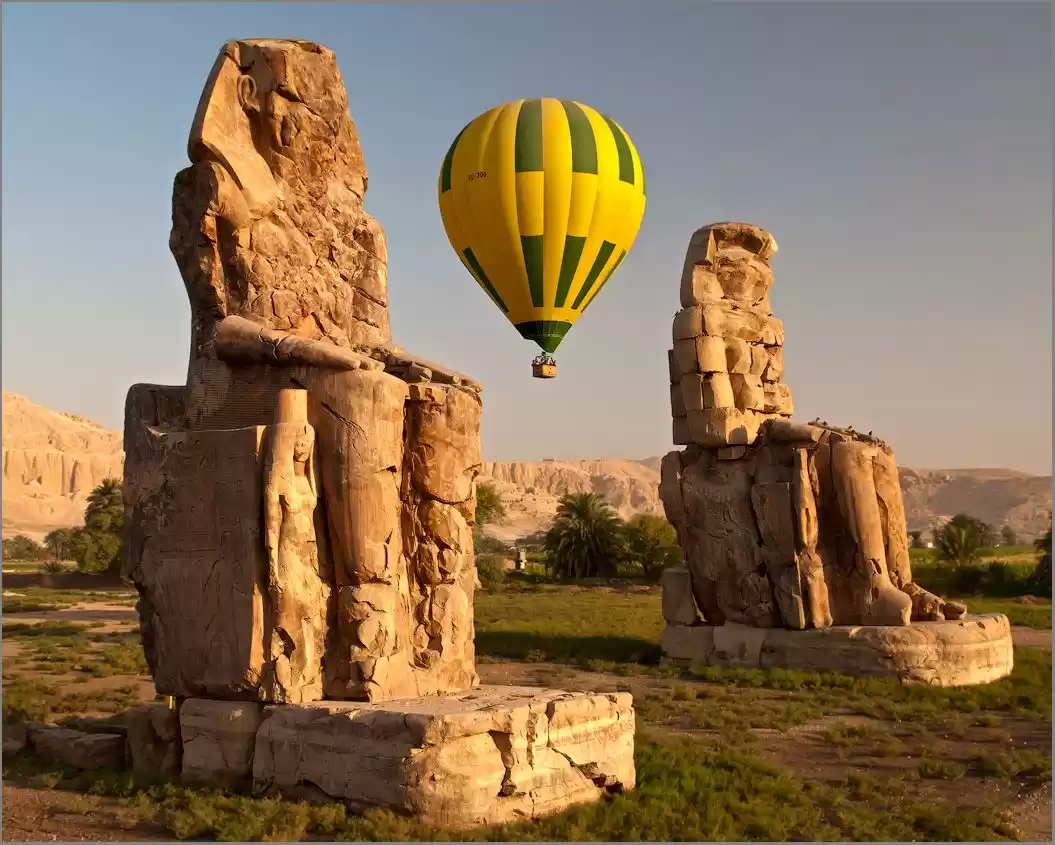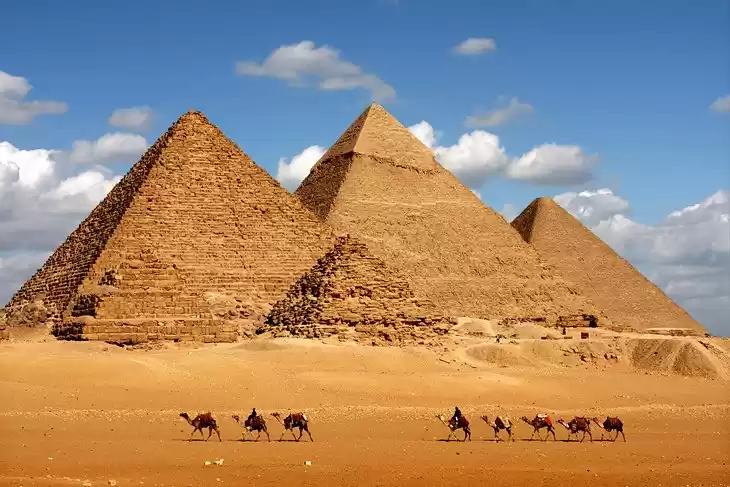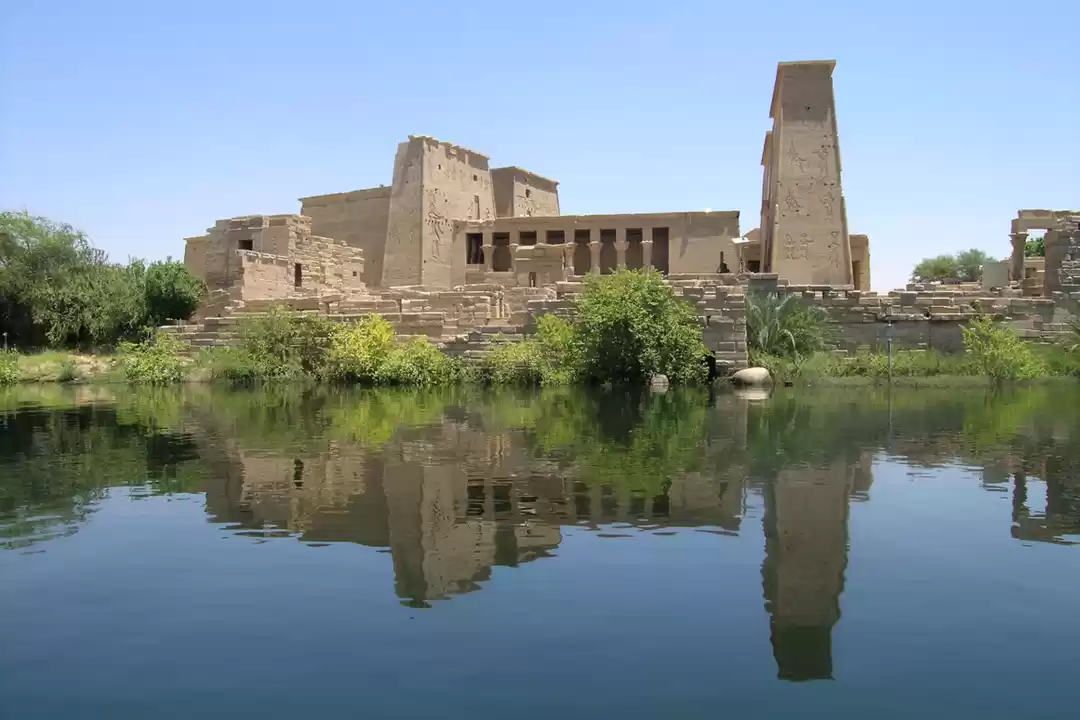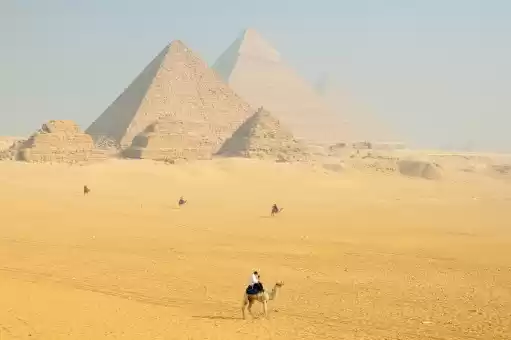Saqqara is one of the most fascinating and impressive archaeological sites in Egypt. It is the necropolis of Memphis, the ancient capital of Egypt, and a UNESCO World Heritage Site. Saqqara is home to some of the oldest and most remarkable monuments of ancient Egyptian civilization, such as the Step Pyramid of Djoser, the first pyramid ever built, and the Serapeum, the burial place of the sacred Apis bulls.
Saqqara also boasts a wealth of tombs, temples, and pyramids that span thousands of years of history and culture, from the 3rd Dynasty to the Roman Period. Saqqara is a must-see destination for anyone interested in exploring the secrets and wonders of ancient Egypt, and experiencing the awe and beauty of its architecture and art.
In this article, we will guide you through the main attractions and features of Saqqara, and what they reveal about ancient Egyptian culture and religion. We will also provide you with some practical and useful tips and resources for visiting and enjoying Saqqara, such as the best time, the best way, the best guide, and the best itinerary. Whether you are a history buff, a culture lover, or a curious traveler, Saqqara will surely captivate and amaze you with its ancient charm and splendor.
The Step Pyramid of Djoser
The Step Pyramid of Djoser is the oldest stone-cut pyramid in the world and the first monumental structure in history. It was built around 2650 BC by Imhotep, the architect and vizier of King Djoser, the founder of the 3rd Dynasty. The Step Pyramid was originally a mastaba, a rectangular tomb with sloping sides, but Imhotep decided to enlarge and expand it by adding five more mastabas on top of each other, creating a six-step pyramid that reached a height of 62 meters. The Step Pyramid was the centerpiece of a large complex that included a high enclosure wall, a colonnaded courtyard, a Heb Sed festival court, and a network of subterranean galleries that housed the king’s burial chamber and various storerooms and chambers.

The Step Pyramid of Djoser is a masterpiece of ancient Egyptian architecture and engineering, and a symbol of the power and prestige of the king and his dynasty. It is also a testimony of the innovation and creativity of Imhotep, who is considered the first architect and engineer in history, and who was later deified as the god of medicine and wisdom. The Step Pyramid and its complex are a must-see attraction in Saqqara, as they offer a glimpse into the origins and evolution of the pyramid building tradition and the royal funerary cult.
The Museum of Imhotep
The Museum of Imhotep is a modern museum that showcases the achievements and legacy of Imhotep and the Step Pyramid complex. It was opened in 2006 and is located near the entrance of the complex. The museum displays a variety of artifacts, models, reconstructions, and information panels related to Imhotep and the Step Pyramid complex. Some of the highlights of the museum include a life-size statue of Imhotep, a replica of his famous papyrus, a model of the Step Pyramid and its complex, and a collection of stone vessels, statues, stelae, and tools that were found in the subterranean galleries of the complex.

The Museum of Imhotep is a valuable source of knowledge and appreciation for Imhotep and the Step Pyramid complex, and a complement to the site visit. It provides a comprehensive and detailed overview of the history, architecture, and significance of the complex, and the life, work, and influence of Imhotep. It also offers a chance to see some of the original and rare artifacts that were discovered in the complex, and to learn more about the excavation and restoration of the site.
The Serapeum
The Serapeum is a series of catacombs that housed the mummified remains of the sacred Apis bulls and their massive granite sarcophagi. The Apis bull was a manifestation of the god Ptah, the creator and patron of Memphis, and was revered as a symbol of fertility and strength. The Apis bull was also associated with the pharaohs, as it was believed that the soul of the bull merged with the soul of the deceased king in the afterlife.

The Serapeum was the burial place of the Apis bulls that were chosen and worshipped as living gods, and then mummified and buried with great ceremony and honor. The Serapeum consists of a long corridor with several side chambers that contain the sarcophagi of the bulls. The sarcophagi are huge and impressive, weighing up to 80 tons and measuring up to 4 meters in length. The oldest sarcophagus dates back to the 18th Dynasty, while the newest one dates back to the Roman Period.
The Serapeum is one of the most remarkable and mysterious attractions in Saqqara, and a testimony of the ancient Egyptian reverence and devotion for the Apis bull. The Serapeum was discovered in 1851 by the French archaeologist Auguste Mariette, who was led to the site by a local boy who showed him a stone with an inscription of a bull. The Serapeum and its sarcophagi pose many challenges and mysteries that still puzzle scholars and researchers, such as how the ancient Egyptians transported, placed, and dated the sarcophagi, and what secrets and treasures they may still hide.
The Pyramid of Teti
The Pyramid of Teti is a pyramid of the 6th Dynasty that has well-preserved texts and decorations in its burial chamber and its surrounding tombs. It was built around 2345 BC by Teti, the first king of the 6th Dynasty, who was the son-in-law of Unas, the last king of the 5th Dynasty. The Pyramid of Teti is similar in structure and layout to the Pyramid of Unas, but smaller in size and height. It measures 78.5 meters on each side and 52.5 meters in height.
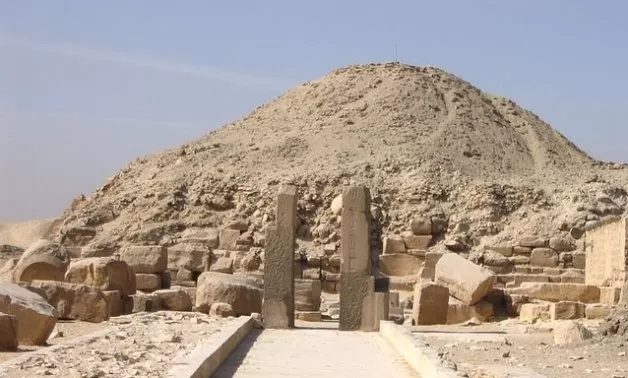
The Pyramid of Teti has a complex that includes a pyramid, a mortuary temple, a causeway, and a valley temple. The pyramid has a north entrance that leads to a descending corridor, a horizontal passage, an antechamber, and a burial chamber. The burial chamber has a sarcophagus and a false door, and is decorated with the Pyramid Texts, the oldest religious writings in the world, that are inscribed on the walls and the ceiling. The Pyramid Texts are a collection of spells and prayers that were meant to protect and guide the king in his journey to the afterlife. The Pyramid of Teti is also surrounded by many tombs of the officials and family members of Teti, such as the tombs of Mereruka, Kagemni, and Ti, which are famous for their scenes and inscriptions of daily life and nature.
The Pyramid of Teti is an important and interesting attraction in Saqqara, as it offers a chance to see and read the Pyramid Texts, the source of ancient Egyptian religion and philosophy, and to admire the tombs and decorations of the 6th Dynasty, which are considered to be among the finest and most elaborate in Saqqara.
The Mastaba of Ti
The Mastaba of Ti is a large and richly decorated tomb of a high official of the 5th Dynasty, with scenes of daily life and religious rituals. Ti was a vizier and a overseer of the pyramids of Neferirkare and Nyuserre, two kings of the 5th Dynasty. He was also a priest and a judge, and had a high status and wealth. His tomb is located near the Pyramid of Teti, and is one of the largest and most beautiful tombs in Saqqara. It measures 60 meters in length and 32 meters in width, and has several chambers, such as the entrance hall, the offering hall, the statue chamber, and the burial shaft. The tomb is famous for its reliefs and paintings that depict various activities and aspects of ancient Egyptian life and nature, such as agriculture, fishing, hunting, crafts, animals, and offerings to the gods. The reliefs and paintings are remarkable for their realism, detail, and color, and for their contrast between the lavish tomb and the modest life of Ti.

The Mastaba of Ti is a must-see attraction in Saqqara, as it provides a unique and vivid insight into the life and culture of the 5th Dynasty, and the art and skill of the ancient Egyptian artists. It is also a testimony of the power and influence of Ti, and his devotion and loyalty to the kings and the gods.
The Pyramid of Unas
The Pyramid of Unas is a pyramid of the 5th Dynasty that is the first to have the Pyramid Texts inscribed on its walls, a collection of spells and prayers for the afterlife. It was built around 2375 BC by Unas, the last king of the 5th Dynasty, who was the father-in-law of Teti, the first king of the 6th Dynasty. The Pyramid of Unas is similar in structure and layout to the Pyramid of Teti, but smaller in size and height. It measures 57.75 meters on each side and 43 meters in height. The Pyramid of Unas has a complex that includes a pyramid, a mortuary temple, a causeway, and a valley temple.

The pyramid has a north entrance that leads to a descending corridor, a horizontal passage, an antechamber, and a burial chamber. The burial chamber has a sarcophagus and a false door, and is decorated with the Pyramid Texts, the source of ancient Egyptian cosmology and theology, that are inscribed on the walls and the ceiling. The Pyramid Texts are a collection of spells and prayers that were meant to protect and guide the king in his journey to the afterlife. The Pyramid Texts are the source of ancient Egyptian cosmology and theology, and reveal the beliefs and concepts of the ancient Egyptians about the creation, the gods, the afterlife, and the role of the king. The Pyramid Texts are also remarkable for their symbolism and imagery, and for their use of different languages and scripts, such as hieroglyphs, hieratic, and demotic.
The Pyramid of Unas is an important and interesting attraction in Saqqara, as it offers a chance to see and read the Pyramid Texts, the oldest religious writings in the world, and to admire the art and skill of the ancient Egyptian scribes and craftsmen. It is also a testimony of the power and influence of Unas, and his legacy and impact on the later pyramids and kings.
The Tomb of Mereruka
The Tomb of Mereruka is a complex of 32 chambers that belonged to the vizier of Teti and his family, with elaborate reliefs and paintings of various activities and animals. Mereruka was the vizier and the son-in-law of Teti, the first king of the 6th Dynasty, and had a high status and wealth. His tomb is located near the Pyramid of Teti, and is one of the most beautiful and spacious tombs in Saqqara. It measures 45 meters in length and 18 meters in width, and has several chambers, such as the main hall, the false door, the chapel, the storerooms, and the burial shafts. The tomb is famous for its reliefs and paintings that depict various activities and aspects of ancient Egyptian life and culture, such as the administration, the economy, the religion, and the art. The reliefs and paintings are remarkable for their realism, detail, and color, and for the insight and information they provide into the life and status of Mereruka and his family, and the society and culture of the 6th Dynasty.
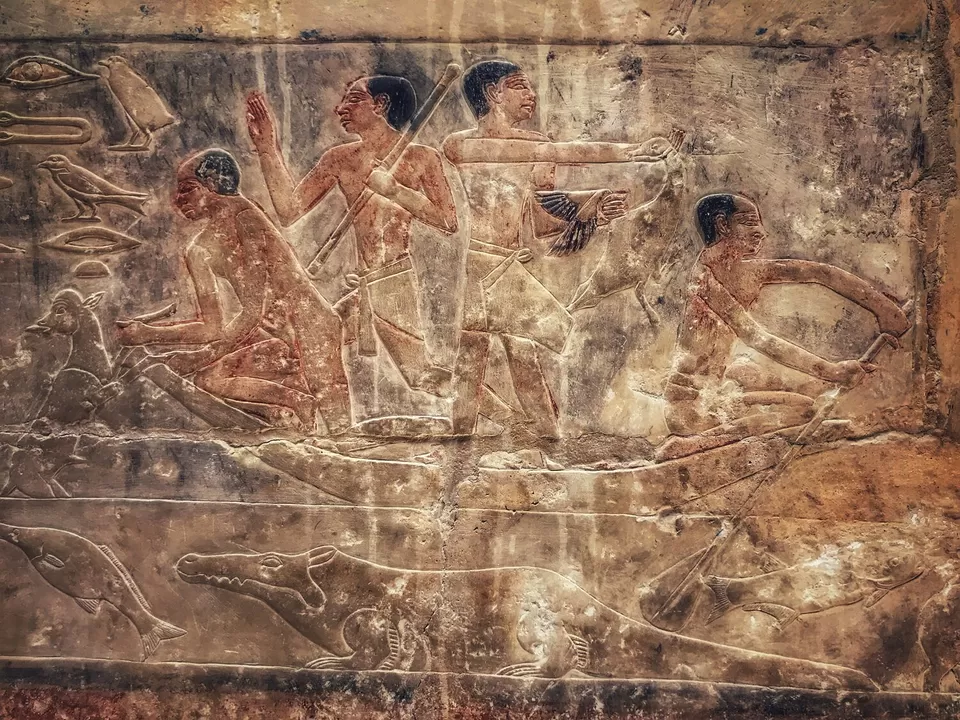
The Tomb of Mereruka is a must-see attraction in Saqqara, as it provides a unique and vivid insight into the life and culture of the 6th Dynasty, and the art and skill of the ancient Egyptian artists. It is also a testimony of the power and influence of Mereruka, and his devotion and loyalty to the king and the gods.
The Tomb of Kagemni
The Tomb of Kagemni is a tomb of the 6th Dynasty that belonged to another vizier of Teti, with similar scenes of daily life and craftsmanship as the Tomb of Mereruka. Kagemni was the vizier and the son-in-law of Teti, the first king of the 6th Dynasty, and had a high status and wealth. His tomb is located near the Pyramid of Teti, and is one of the largest and most beautiful tombs in Saqqara. It measures 40 meters in length and 16 meters in width, and has several chambers, such as the entrance hall, the offering hall, the statue chamber, and the burial shaft. The tomb is famous for its scenes and inscriptions of daily life and craftsmanship, such as agriculture, fishing, hunting, crafts, animals, and offerings to the gods. The scenes and inscriptions are remarkable for their realism, detail, and color, and for the similarity and difference with the Tomb of Mereruka.

The Tomb of Kagemni is an important and interesting attraction in Saqqara, as it offers a chance to see and compare the scenes and inscriptions of the 6th Dynasty, and to appreciate the influence, imitation, innovation, and variation of the artists and patrons. It is also a testimony of the power and influence of Kagemni, and his devotion and loyalty to the king and the gods.
The Tomb of Horemheb
The Tomb of Horemheb is a tomb of the 18th Dynasty that belonged to the general and later pharaoh Horemheb, with scenes of his military campaigns and offerings to the gods. Horemheb was the general and the successor of Tutankhamun, the last king of the 18th Dynasty, and the restorer of the order and stability of Egypt after the Amarna Period. He ruled from 1323 to 1295 BC, and was the founder of the 19th Dynasty. His tomb is located near the Pyramid of Unas, and is one of the most impressive and elaborate tombs in Saqqara. It measures 45 meters in length and 15 meters in width, and has several chambers, such as the entrance hall, the inner hall, the chapel, and the burial chamber. The tomb is famous for its scenes and inscriptions of military and religious activities, such as the battles, the victories, the tributes, and the offerings to the gods. The scenes and inscriptions are remarkable for their realism, detail, and color, and for the evidence and expression of his political and religious reforms and achievements.

The Tomb of Horemheb is a valuable and fascinating attraction in Saqqara, as it offers a chance to see and learn about the role and impact of Horemheb in restoring the order and stability of Egypt after the Amarna Period, and his legacy and influence on the later pharaohs and dynasties. It is also a testimony of the power and prestige of Horemheb, and his devotion and loyalty to the gods and the country.
The Pyramid of Sekhemkhet
The Pyramid of Sekhemkhet is an unfinished pyramid of the 3rd Dynasty that was discovered in 1951 and remains largely unexplored. It was built around 2640 BC by Sekhemkhet, the second king of the 3rd Dynasty, who was the successor of Djoser, the founder of the 3rd Dynasty and the builder of the Step Pyramid. The Pyramid of Sekhemkhet is similar in structure and layout to the Step Pyramid, but smaller in size and height. It measures 120 meters on each side and 70 meters in height. The Pyramid of Sekhemkhet has a complex that includes a pyramid, an enclosure wall, a causeway, and a valley temple. The pyramid has a north entrance that leads to a descending corridor, a horizontal passage, an antechamber, and a burial chamber. The burial chamber is sealed and has not been opened yet, and may contain the sarcophagus and the treasures of the king.

The Pyramid of Sekhemkhet is one of the most mysterious and intriguing attractions in Saqqara, and a testimony of the innovation and creativity of the 3rd Dynasty. The Pyramid of Sekhemkhet and its complex pose many challenges and mysteries that still puzzle scholars and researchers, such as the reason and the time of the abandonment of the construction, the security and the preservation of the burial chamber, and the discovery and the exploration of the new information and artifacts.
Saqqara is one of the most amazing and impressive archaeological sites in Egypt, and a must-see destination for anyone interested in ancient Egyptian history and culture. Saqqara is home to some of the oldest and most remarkable monuments of ancient Egyptian civilization, such as the Step Pyramid of Djoser, the first pyramid ever built, and the Serapeum, the burial place of the sacred Apis bulls. Saqqara also boasts a wealth of tombs, temples, and pyramids that span thousands of years of history and culture, from the 3rd Dynasty to the Roman Period. Saqqara offers a unique and vivid insight into the secrets and wonders of ancient Egypt, and the awe and beauty of its architecture and art.
Tips for Travellers
If you want to visit and enjoy Saqqara, here are some practical and useful tips and resources for you:
1. The best time to visit Saqqara is from October to April, when the weather is mild and pleasant, and the crowds are less. Avoid the summer months, when the temperature can reach up to 40°C, and the winter months, when the site can be closed due to heavy rain or sandstorms.
2. The best way to get to Saqqara is by car or by bus, as there is no train or metro station nearby. You can either hire a private car or a taxi, or join a guided tour or a bus service that departs from Cairo or Giza. The distance from Cairo to Saqqara is about 30 km, and the journey takes about an hour.
3. The best guide to Saqqara is a licensed and knowledgeable guide who can explain the history, architecture, and significance of the site and its attractions, and answer your questions and curiosities. You can either book a guide in advance online or through your hotel, or hire one at the entrance of the site. Make sure to agree on the price and the duration of the tour before you start.
4. The best itinerary to Saqqara is a full-day tour that covers the main attractions and features of the site, such as the Step Pyramid of Djoser, the Museum of Imhotep, the Serapeum, the Pyramid of Teti, the Mastaba of Ti, the Pyramid of Unas, the Tomb of Mereruka, the Tomb of Kagemni, the Tomb of Horemheb, and the Pyramid of Sekhemkhet. You can also combine your visit to Saqqara with other nearby sites, such as Dahshur, Memphis, or Giza, depending on your time and interest.
We hope you enjoyed this article and learned more about Saqqara and its attractions. If you are planning to visit Saqqara, we wish you a wonderful and memorable trip.
If you have already visited Saqqara, we would love to hear your feedback and experience. Please share your comments and photos with us on our website,



